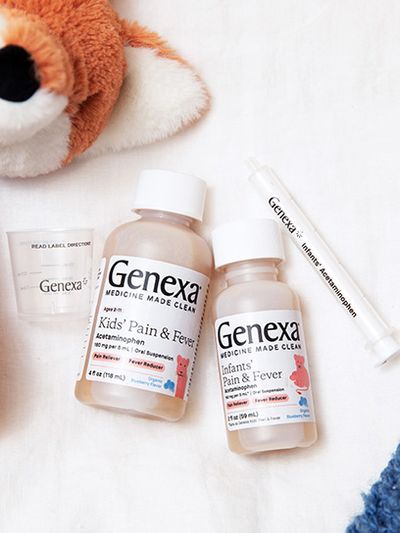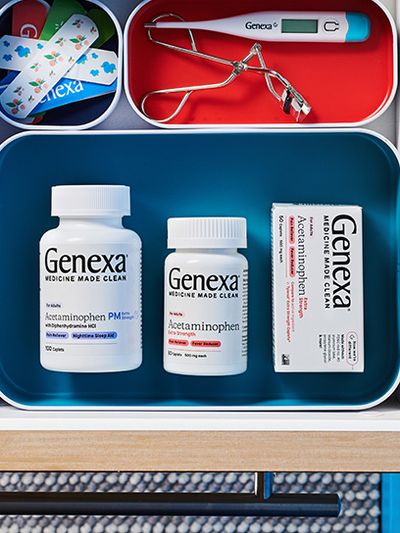How To Treat Swelling Caused by Injury or Inflammation
Managing Symptoms Of Inflammation
Table of contents:
Swelling will affect nearly everyone at some point in their lives regardless of whether it is caused by an injury, illness, heat exposure, or another cause. If you are suffering from swelling, here’s how to treat swelling caused by injury or inflammation without conventional anti-inflammatory medications.
What is swelling and why does swelling occur?
Swelling is said to occur when part of the body increases in size or changes shape. Often, swelling results from body fluid accumulating in part of the body, but it can also occur as a result of tissue growth or abnormal movement or changes in the position of the tissue.
If you’ve been injured, swelling begins to occur within just a few seconds of experiencing an injury. Your body’s immune system immediately starts the healing process by producing an inflammatory response, which floods the tissues in the injured area with fluid and proteins to begin repair. Your body’s circulation in the area will increase to help move out waste, and the area will start to feel warmer to the touch and may become tender. All of these are normal parts of the body’s process.
Swelling can occur for many different reasons. When swelling is found in just one specific part of the body, it is said to be localized.
When affecting the entire body, swelling is said to be generalized. Localized swelling commonly occurs as a result of injury, but it can also occur when you’ve been sitting in one place for an extended period of time in hot weather, like when your feet or ankles become swollen.
Staying in one position for an extended period of time causes blood and fluid to pool in the extremities as a result of gravity.
Common causes of localized swelling include:
- Injury to a specific part of the body. When a body part is injured, tears in the tiny blood vessels underneath the skin can cause bruising, which occurs when the blood vessels leak blood underneath the skin. Injuries can also cause blood to pool in and around the joints. Swelling due to injury can affect just one part of the body, like a sprained ankle, or it can affect large parts of the body, like falling off a ladder and landing on one side of your body.
- Infection. When you experience an infection in a joint or underneath the skin, an abscess can form. An abscess is a pocket of pus that forms in the vicinity of infected tissue, causing swelling. Infections of the skin, such as cellulitis, can also cause the skin to become swollen.
- Burns. When the body is burned, the immune system sends blood and immune cells to the area to begin the healing process. Swelling can occur as a result, particularly with more severe burns.
- Inflammation. People who experience inflammation as a result of an overuse injury may experience swelling in the area. For example, people with tennis elbow, a type of tendinitis that occurs in the elbow, may experience swelling of the tendon. If the tendon or ligament becomes torn, swelling can also occur. Bursitis is a type of swelling that occurs when the sac that cushions and lubricates the joints, called the bursa, becomes injured and inflamed.
- Insect bites or stings. Insect bites and stings affect everyone differently, but they often cause a small amount of redness or swelling. People who have an allergic reaction to insect bites or stings will experience more swelling than other people, often accompanied by redness and itching.
- Localized swelling can also occur as a result of the development of a cyst or a swollen gland, such as the lymph nodes.
Generalized swelling more commonly occurs as a result of a particular disease or reaction to a medication or allergen. Common causes of generalized swelling include:
Allergic reaction. People who are severely allergic to things like peanuts, shellfish, wheat, and other allergens can experience a severe reaction called anaphylaxis that causes swelling of the face, lips, throat, and hands. If this occurs, you must seek immediate medical treatment right away.
- Autoimmune diseases. Autoimmune diseases like rheumatoid arthritis and lupus can cause your body to swell as the immune system mistakenly attacks and destroys different tissues in the body.
- Medication. Medications can cause swelling to occur throughout the body as a result of changes to how fluids move. Steroids in particular are well known for causing swelling.
- Circulation problems. Some medical conditions, including diabetes, heart problems, vascular issues, and kidney disease, can cause swelling throughout the body. Blood clots can cause a condition called thrombophlebitis, which occurs when blood flow to an extremity is cut off, causing blood to pool in the extremity.
Abdominal problems. Certain medical conditions can cause fluid to build up in the abdomen. These conditions include liver disease (cirrhosis) and malnutrition, among others.
Swelling also commonly occurs after surgical procedures and medical treatments. Swelling is a sign of the body’s natural healing process as fluid and blood rush into the area to begin healing the wound. Some people may also experience swelling as a reaction to certain substances, such as anesthesia or dyes that are commonly used as part of these treatments. Swelling most commonly occurs in the area surrounding an incision but may occur anywhere inside the body affected by the procedure.
Hormonal changes can also cause mild swelling to occur. Many women notice bloating in the abdomen around their menstrual cycles due to increased fluid retention. Hormonal changes during pregnancy can cause some women to experience swelling in their hands, feet, or legs, particularly during the third trimester.
While some swelling associated with pregnancy is considered normal, a dangerous condition called preeclampsia, or high blood pressure, can also cause generalized swelling. If you notice swelling that is occurring outside of your legs, hands, and feet during pregnancy, contact your doctor.
How To Treat Swelling Caused By Injury or Inflammation
If you experience swelling as a result of injury or inflammation, don’t panic. Swelling often resolves on its own before you even know what caused it. Most swelling can be treated at home with some simple remedies.
While swelling is common and often resolves on its own, it is important for you to monitor your swelling and keep it under control. If swelling is left unchecked, it can cause the muscles around the injury to become weak, and the swelling can become chronic. Over time, chronic swelling makes the tissues in the body more rigid and susceptible to injury.
The best way to treat swelling caused by injury or inflammation is to use the RICE method, which stands for Rest, Ice, Compress, and Elevate. Using these strategies will help to keep your swelling at a minimum while still allowing your body to heal and recover properly.
Rest
Rest is the simplest way to help reduce swelling caused by injury or inflammation. While it can be very tempting to keep doing your normal activities when you’re injured, this usually ends up prolonging the healing process. Rather than continuing to use the injured body part, rest up, if possible. Incorporating gentle movement, such as walking or stretching, can help to keep blood flowing without causing further injury.
Ice
Using an ice pack or cold compress on a swollen area is the quickest way to bring swelling down. Ice and other forms of cold therapy minimize swelling by decreasing blood flow to the area and restricting cellular metabolism.
If you have generalized swelling, an ice bath can help to reduce swelling all over your body. Ice or other cold therapy should be applied for 20 to 30 minutes at a time multiple times throughout the day, particularly in the first few days after an injury. Heat has the opposite effect and can actually increase swelling, so while heat may feel good for a few minutes, it can make your swelling worse in the long term.
Compress
Compression helps to keep swelling down by reducing blood flow to an injured or inflamed area. You can use things like compression bandages, cold compresses, or elastic bandages to wrap the injured area. Compression should not be wrapped so tightly that it cuts off blood flow, but it should provide enough support to keep swelling down. Compression may also help to reduce pain and discomfort by partially immobilizing the injured area.
Elevate
Keeping an injured area elevated can help to reduce swelling by slowing blood flow to an injured area. In order to elevate the injured body part effectively, you’ll need to keep the body part above your heart. Legs and feet can be elevated by propping your leg up on a pillow while lying down or sitting in a recliner. If your arm or hand is swollen, try resting it on a table or chair that is above the height of your heart.
Homeopathic Remedies
Homeopathic remedies may help to reduce discomfort associated with swelling and support healthy circulation. If you are interested in using a homeopathic remedy, talk to your doctor to make sure that other medications that you are taking will not interact negatively with any of the products you are using.
Summary
The best way to treat swelling caused by injury or inflammation is to follow the RICE method and rest, ice, compress, and elevate the affected body part. Swelling can occur for many different reasons, but the RICE method is helpful in reducing swelling for most types of localized swelling. If you are experiencing discomfort as a result of the swelling, consider using a homeopathic remedy.






